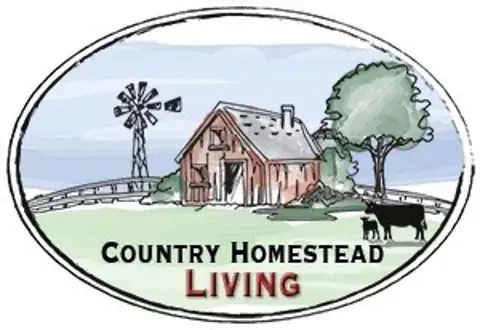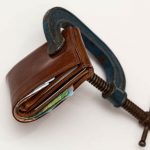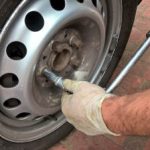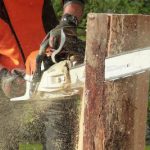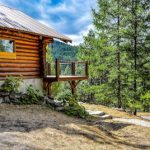When we moved from the city to the country we followed 7 steps that made our transition to homestead life successful.
If you follow these same 7 steps your move to the country will be much easier and much more successful.
7 Steps To Achieve Your Homestead Dreams:
1. Get out of debt
2. Know you can find a job in the country
3. Learn country skills now
4. Decide where to move
5. Know land values in your chosen area
6. Seek advice from those who have moved
7. Set short and long-term goals
You are not alone in your desire to leave the city or suburbs and move to the Country.
Several years ago a government study found that only nine percent (9%) of Americans would choose to live in a major city!
Of those surveyed, 24% wanted to live in a small town away from a major city and 22% wanted to live in a rural area.¹
Since human nature is similar all around the world, these figures should be applicable to many different countries and cultures worldwide.
According to that study, the largest segment of those wanting to move out of the city wanted enough land to raise a garden and have a small orchard and some berry bushes.
Or they wanted to transition to a completely self-sufficient country homestead lifestyle.
In my years of helping people transition from a city or suburban area to the country there is one problem that repeats itself with enough frequency to warrant a warning.
Moving to the country is a process, it is not just an event!
Many who decide that they must move as soon as possible end up purchasing the first likely looking property a Real Estate Agent shows them.
Then they discover that in their haste to exit the city, they overlooked one or more crucial aspects of a successful move from the city to the country.
It is not uncommon for these people to end up moving back to the city convinced that a country lifestyle is not for them.
In reality the problem has nothing to do with the country lifestyle.
And everything to do with not knowing how to make a successful transition from living in the city to living in the country.
7 Steps That Will Guide You In Achieving Your Country Or Homestead Dreams
1. Begin now to take active steps to get out of debt. Moving to the country is much easier if you are debt free.
2. Assure that you have marketable skills for earning a living in the country.
3. Begin learning country skills before leaving the city.
4. Decide which area or areas of the country you would like to live in.
5. Become familiar with land values in those areas of the country your interested in moving to.
6. If you know someone who has moved from the city to the country, ask them what they did right and what they would change if they were to do it again.
7. Set short-term and long-term goals to keep focused on your Country or Homestead dreams.

1. Take Active Steps To Get Out Of Debt
In America as in many country’s it has become the norm to live with debt and focus on your credit score.
I believe it would be more accurate to call it a How Much Debt Can I Handle Score!
If you want to put a stake through the heart of your Country or Homestead dreams, have so much debt that a move is impossible.
The best way I know of getting out of debt is to follow a proven formula for success.
Several years ago I learned of what I believe is that best formula.
It has proven itself king when it comes to getting out of debt for thousands of people.
It takes discipline and hard work but it is worth it.
I get nothing for recommending this to you but the satisfaction of knowing that if you follow his proven formula you will become debt free in the shortest period of time possible.
Learn about Dave Ramsey’s debt snowball from DaveRamsey.com.

2. Be Sure You Can Earn A Living In The Country
Most skills that are in demand in the city can have a place in the country.
The difference is, the demand is not as large as in the city.
I have met literally dozens of people who moved to the country only to learn that their skill set was not needed in the area where they moved.
They either ended up going back to the city or taking a job beneath their skill level just to try and make ends meet.
When we moved from the city to the country some 15 years ago we spent almost as much time researching and looking at job opportunities as we did looking at property.
There were entire days when we drove a hundred or more miles just to check out a single potential job opportunity.
We did not decide on the specific area to move to until we knew there was a job available that would sustain us.
I wanted to do much more than a web search for potential job opportunities.
Maybe I’m a little old fashioned, but I still believe that there is something to be said for setting up an appointment and appearing in person at a potential job site.
That onsite visit gives you and the hiring department at the potential job site an opportunity to see if your personality and their job requirements are compatible.
If you are a licensed professional, as I was, the license and the recommendations will show competence in your professional area of work.
However, an onsite visit reveals important traits of the job and of the job seeker that can assure both parties of compatibility or non-compatibility.
In a rural area, much more than in a city or suburban area, it is that personal visit that can mean the difference between a job or a turn down.
If you are not a licensed professional, an onsite visit to a potential employer can be a great boost to getting a job in the country.
I have learned that many country employers are very particular about who they hire.
With a smaller number of potential customers than a city employer in the same field has to draw from, many country employers are wanting to hire people who are mature, friendly, courteous and they feel pay attention to detail.
If two applicants apply for the same job, it is a slam dunk that the one who displays the ability to be friendly, courteous and pay attention to detail will get the job, even over someone with more years experience.
After a few years I decided I wanted more time to live life on my terms than on the time commitment that a licensed profession required.
I wanted more freedom to be at home and spend time with my family.
I also desired to do the things I had wanted to do but couldn’t because of the time my profession kept me away from home.
This would require a home based income that could potentially replace the income I had been making.
We found an excellent way to have the prospect of making a full time income from home while being able to devote the needed time to our homestead and other activities.
We share how we earn passive income in “How We Work From Home.”
3. Learn Basic Skills Needed In The Country Before Leaving The City
One thing I noticed right away when we were looking at moving to the country was the number of metal shop buildings seen as we were driving around rural areas.
One of the main reasons for all those metal shop buildings is that Country and Homestead dwellers do a lot more repairs on vehicles, homes and other equipment and machinery than city dwellers do.
Reasons include distance to a repair facility, time lost from using the item needing repaired and the fact that rural dwellers are more self sufficient than the majority of city dwellers.
Yes, there are 15 minute oil change places in the country but it might take you 30 minutes to drive to get to one.
Then you could wait in line while they preform two or three oil changes before they get to your car.
Then you have a 30 minute drive back home.
You could spend 2 hours of a day just to get your oil changed plus paying for the oil, filer and the labor charge.
If you have the tools, oil and filter and a little experience, you can have your oil changed in 30 minutes and be on to the next task with a savings of 90 minutes time, the fuel it would have taken to travel to and from the 15 minute oil change place and for just the cost of the oil and filter!
A lot of Country and Homestead dwellers either heat with wood or supplement their heat with wood.
This was true even in the Southern part of the U.S. where I lived before moving to the mountains of North Idaho.
Everyone here knows how to sharpen a saw chain, troubleshoot a saw that won’t start, has an extra spark plug, chain and bar and knows how to replace those parts on their saw.
The nearest hardware store that carries parts for a particular chain saw might be 30 minutes away so it just makes sense to have spare parts.
And know how to replace worn parts when the need arises.
Can you fix a toilet that keeps running or replace a leaky flapper valve?
Those things happen in the Country and seem to have a habit of doing so at the times when a handyman can’t come out and take care of it for at least a day or more because of jobs already scheduled.
Do you know how to mend a broken fence or fix a gate that has a broken hinge or latch?
There are a lot of little things that can happen in the Country that is taken in stride and fixed by country people every time they happen.
Ladies, do you know how to care for a sick child when the nearest doctor is 45 minutes away?
How about making repairs to clothes instead of taking them to a seamstress which could be an hour or more away?
If you plan to garden, do you know how to can, freeze and dehydrate garden produce?
Many of these Country and Homestead Skills may be able to be learned at adult classes in a Junior College nearby before you make your move to the Country.
A Community Bulletin Board may have an announcement about these type of classes.
A search on the internet may reveal classes like these in your area or YouTube Video’s can give you step by step instructions on many different topics.
A great source for used books on home repairs, plumbing repairs and simple electrical repairs as well as homemaking skills such as sewing, canning, freezing and dehydrating is your local Goodwill Store or other second-hand store.
They have a used book section where one can often find Time Life Books, Reader’s Digest Books and other books that can teach you many of the basic Country and Homestead Living Skills.
As a bonus, these books usually cost about $2.00 each and are a good way to build a library of Country Skills.
Even a book that was printed in the mid-1970’s has good usable techniques that are still valuable today.
4. What Area Of The Country Would You Like To Move To
You may have this question answered already.
If so, good for you.
We thought we had the area chosen before we made our move and today we are living nearly 100 miles away from the place we first moved to.
After you arrive at a particular location, life has a way of showing you that a change is needed in your plans.
I prefer to have people search the internet before making the decision where they want to relocate.
By doing a search for climate in the area you are interested in you can learn what the average temperature, average rainfall and average hours of sunshine are each month of the year.
What is a beautiful, warm, sunny paradise in summer can be dismal, cold and covered with three feet of snow for 4 months of the year!
It can be a great place to vacation in summer but the last place some people would want to live in winter.
Some people do not tolerate a long hot, humid summer.
It is fine when indoors is air conditioned comfort, but to be outside doing those routine summer activities such as lawn mowing, even on a riding mower, is not how they want to spend the rest of their summers.
For those people, searching for the average monthly humidity helps determine likely areas to live.
This next statement may seem a little counter intuitive; however, 95 degrees F with 30% humidity feels cooler than 75 degrees F and 95% humidity.
In winter a temperature of 10 degrees F and low humidity with a wind of 10 mph can seem warmer than 30 degrees F with high humidity and a 5 mph wind.
It is the humidity that makes the difference in both hot and cold weather!
Once the climate and weather are to your liking, the next step is to check out the type of services; hospitals, schools, stores etc.
This way you can compare areas and may be able to remove a given area from your list without the expense of an onsite visit.

5. What About Land Values Where You Are Interested In Moving
It is a mistake to think that land values are the same everywhere.
I can drive across the County line, about 30 minutes south, and the price of a 10 acre parcel of land is more than double what it is in the County I live in.
Yet if you did not see the sign saying you crossed the County line, you would see absolutely no difference in terrain, scenery, and the climate is almost identical.
I can drive to the next County, about 45 minutes north and the price of a 10 acre parcel of land is slightly less than in the County I live in.
Yet all three Counties are in the same State!
If I was to look for land 15 minutes away but across the State line the price of land would go up by about 20%.
To learn about land values in the areas you are considering moving, after completing step 4 above, do an internet search for Real Estate Companies in your chosen area.
You might find it enlightening to search for Real Estate Companies in the surrounding counties also.
You could learn that driving a short additional distance could result in a savings of twenty-five thousand dollars or more when purchasing land!
Nationwide, in the U.S., the price listed for property, also known as the Asking Price, averages out to be 20% higher than the Selling price of land.
Knowing the value of land before looking at land with a Real Estate Agent is a great way to avoid making an offer that could end up being more than the land is actually worth.

6. Talk With Those Who Have Moved From City To Country
One of the best ways to avoid making mistakes is to learn from the mistakes of others.
Those who have moved from the city to the country have learned lessons that can be very valuable to someone who has never made that move before.
Some of those mistakes cost us thousands of dollars.
Other mistakes led us to property that turned out to be different than what we believed it would be.
Each of us made different mistakes, yet many of us made some of the same mistakes in our move.
Smart purchasers of Country or Homestead Property can learn a lot by asking those who have made the move what it is they would do differently if they had it to do all over again.
Also ask them what it was they were glad they did when they made their move.
I have yet to meet a person who would not be happy to share his past experiences with someone who was genuinely interested in learning how to avoid mistakes and problems when moving from the city to the country.
So if you know someone who has made the move, call them up and see if you can stop by for a visit or if they’ll share with you over the phone.
You will be glad you took the time to talk with them!

7. Set A Timetable Of Short-Term And Long-Term Goals
Nearly all human beings have a tendency to procrastinate.
Sometimes it is from fear of change or of making a mistake.
There is always something we’d like to do or need to do that can steal the time we must spend on achieving our goals.
There is an old saying: “Time and tide waits for no man.”
In today’s world we need to add, “Waits for no woman either.”
This is precisely why setting goals is very important.
There are two types of goals; short-term and long-term.
To help prepare for a move from city to country an example of a short-term goal is to take a Red Cross First Aid Course.
Once this is accomplished you are well on your way to caring for many of the little emergencies of life without taking the time out of a day to drive to the nearest Doctor or Emergency Room.
Before checking this goal off of your list, find a couple of good First Aid Books or Home Medical Guides from your local Goodwill or Second Hand Thrift Store.
Anything printed after 1990 will contain valuable information.
While you are working on this goal, start putting together a First Aid Kit containing those supplies you have learned how to use.
Another short-term goal would be to research areas of the country on the web for 3 hours a week and have the areas you are most interested in moving to broken down into the top three areas by this day next month.
A long-term goal could be to complete a Licensed Practical Nurse course.
This is usually a 13 month course also called a Licensed Vocational Nurse course in some areas.
Perhaps your goal will be to complete this in the next 18 months.
This training could land you a job at a country hospital, doctor’s office or extended care facility.
Another long-term goal might be to research and acquire a good used 4 wheel drive pickup truck suitable for use on a homestead or small family farm.
Look for a year, make and model that can haul at least 1,500 pounds, is easy to do the routine maintenance on, and the insurance will not break your bank.
While working on this goal, if you do not have basic mechanical skills, check out adult education classes at a local Junior College and purchase a Haynes Repair Manual for that particular pick up truck and a good set of tools.
Now you are in a position to handle many chores and emergencies on the homestead that are best done with a pickup truck.
Conclusion
I stated earlier that moving to the country was not an event, it was a process.
Like anything in life that is worthwhile, a move from city to Country or Homestead Property involves more than just deciding to do it and calling up a Real Estate Agent and asking to see property.
By following the 7 steps above you will have covered the areas of achieving your dreams of Country or Homestead Dreams that many people over look.
1. “Finding & Buying Your Place In The Country” by Les & Carol Scher, Dearborn Trade, 2000, p xii
Related Questions
What States allow homesteading?
The free land is gone, but all States allow for people to homestead, to live a self-sufficient life style in rural areas.
Today homesteading is living in a manner where you are as self-sufficient as possible.
Originally it meant living on and improving land under a government program to get land for free.
The meaning of homesteading has changed over the years as I discuss in “A Modern Homestead – Definition, Lifestyle Change, Gardening.”
What is a homestead tax exemption?
This is an amount of money set out in a State’s Homestead Law that is exempt from property taxes.
For Example
If your property was Tax Assessed at $200,000.00 and the homestead exemption was $50,000,00 you would only pay property tax on $150,000.00 of property value.
What is self-sufficient homesteading?
Self-sufficient homesteading is living your life with as little dependence on utilities and stores as possible.
Some homesteaders have their own electrical company – solar or wind power.
If they have a well and grow or raise the food they eat making them very self-sufficient.
